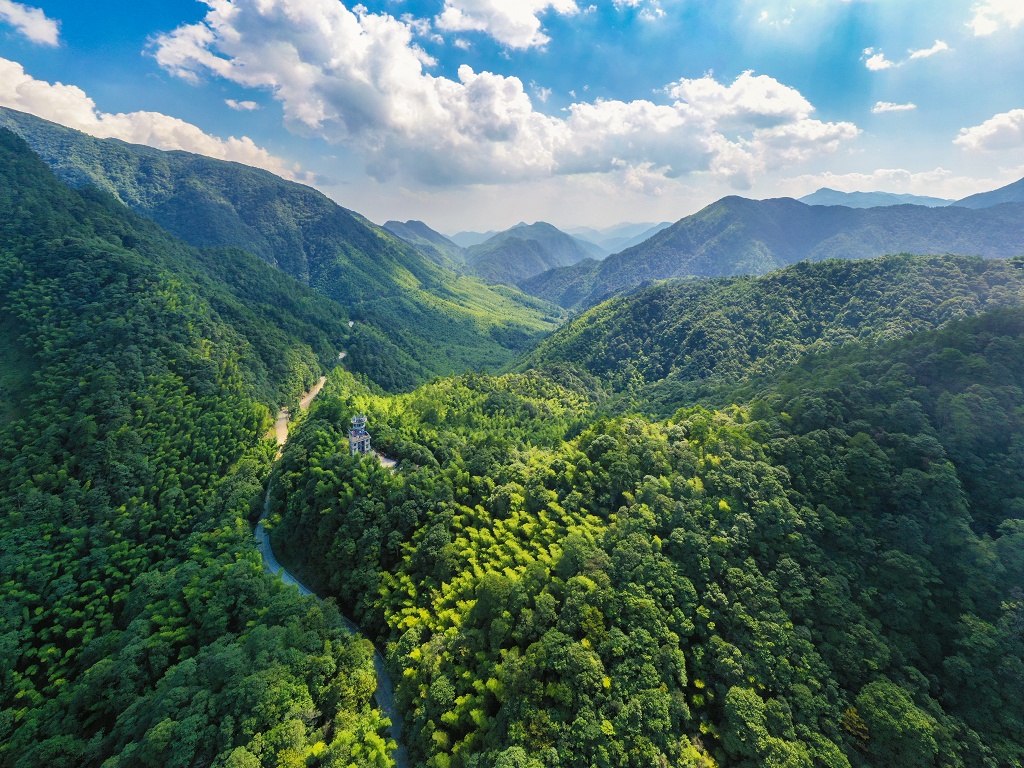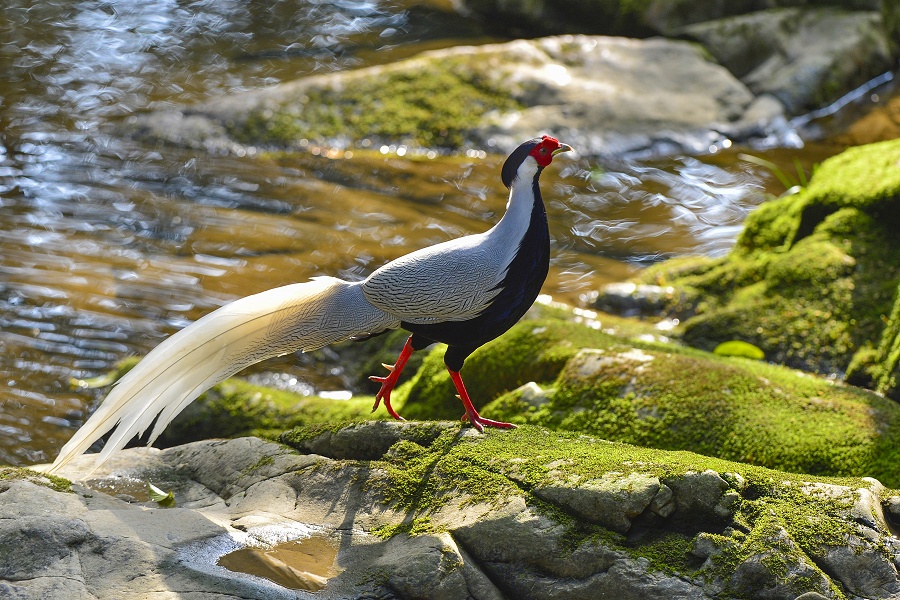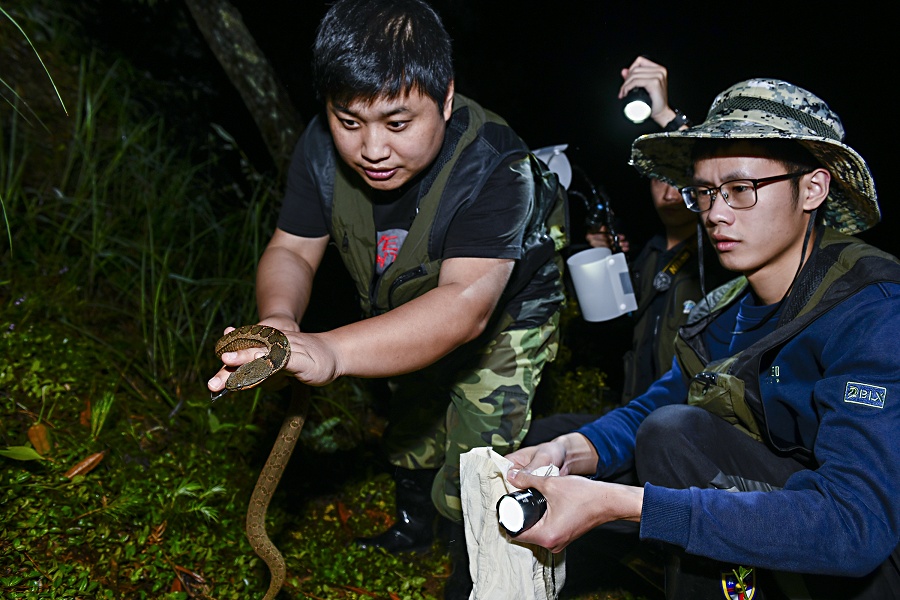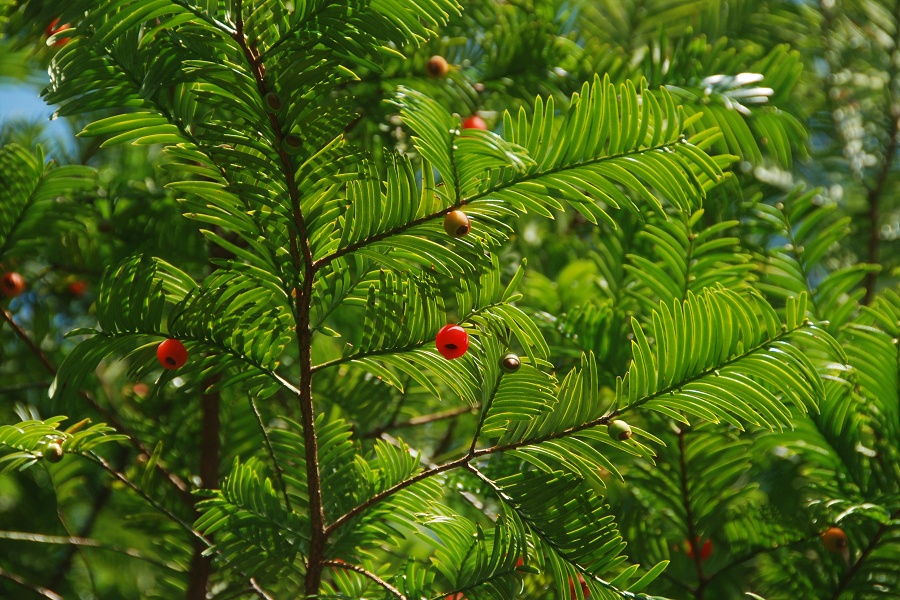Biological Treasures in Mount Wuyi

“0701C009, Quercus myrsinifolia Blume.”
“DBH (Diameter at Breast Height):15.1 meters; H (Height):18 meters; W(Width): 4x4 meters; L (Length): 15 meters.”
This summer, more than 30 students from Fujian Agriculture and Forestry University carried out a thorough survey of a sample plot 1,200 meters above sea level at Huangxizhou of Mount Wuyi in southeastern China’s Fujian Province.
Teacher Lin Wenjun led one student to designate the sample plot, and then the rest were divided into groups of four to conduct the survey. Then the other necessary tasks were specifically assigned within each group. One measured the DBH, one gauged tree height and branch length, one took notes, and the rest marked newly selected plants with a metal plate. The changes in plants are fairly obvious through comparing data recorded once every five years.
The team is devoted to researching changes in flora diversity according to the different altitudes in the Wuyi Mountain National Park. In July, they trekked to 14 sample plots in the national park with altitudes ranging from 800 to 2,100 meters above sea level.
“The sample plots offer a comprehensive platform for biodiversity research in large forests,” Lin said. “We not only observe the long-term changes in the functional traits of flora and the whole forest community, but also explore the biodiversity maintenance mechanism and resulting effects.”
Mount Wuyi boasts the largest, most complete, and most representative mid-subtropical forest ecosystem among sites at the same latitude in the world, with a forest coverage rate of 96.3 percent. It is an essential player in preserving global biodiversity.

Cabot’s tragopan. (Photo by Wan Yong)
“Mount Wuyi is considered a ‘natural refuge’ for rare creatures on the evolutionary chain and a ‘holy site’ for biological research thanks to its desirable ecological environment and special geographical location,” said Zhang Huiguang, director of the Scientific Research and Monitoring Center of the Wuyi Mountain National Park.
Field surveys are fundamental to gaining knowledge of regional biological resources. Since April 2021, more than 100 experts and scholars from over 20 universities and research institutes have been organized to carry out a three-year survey of the biological resources in the Wuyi Mountain National Park, under the partnership between the national park and the Nanjing Institute of Environmental Sciences under China’s Ministry of Ecology and Environment.

Researchers conduct a special survey on amphibians and reptiles in the Wuyi Mountain National Park. (Photo by Huang Hai)
In June and July this year, Peng Lingfei, an associate professor at the College of Plant Protection, Fujian Agriculture and Forestry University, led a team to conduct a background survey of insects in Tongmu Village, one of the core areas of the national park.
Recently, they caught parasitoid wasps frequenting an area envelopoed by grass, bushes, and broad-leaved forests. According to Peng, parasitoid wasps featuring shiny luster and translucent wings are an integral part of the ecosystem because their victims are other insects, and they feed on the hosts until the latter’s death.
“Background surveys help find out natural enemies of insect pests and their hosts in this area,” Peng said. “If a certain insect pest breaks out, we can bring in its parasite for pest control instead of using chemicals.”
The background survey is now about halfway done. As of July 2023, researchers had recorded species of higher plants, vertebrates, insects, macrofungi, and lichens numbering 1,850, 561, 4,506, 444 and 128, respectively.
“National parks are not only a window to China’s magnificent landscapes but also bases for science education,” Zhang said. “We will use the survey results for promotion and education to inspire public interest in visiting and learning about Mount Wuyi and actively participating in local biological preservation.”

Chinese yew. (Photo by Xu Zikun)